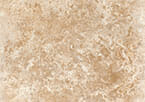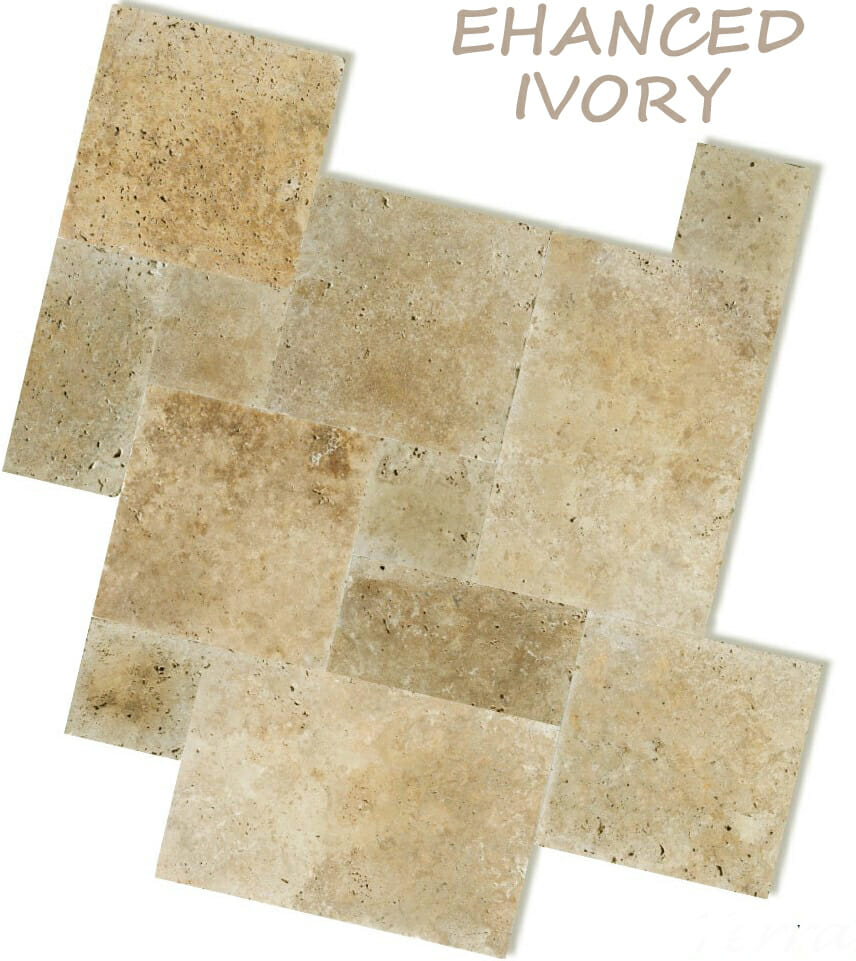Travertine Tiles and Pavers Frequently Asked Questions Answered
What is Travertine?
Tavertine is a form of limestone deposited by mineral springs, especially hot springs. It is formed by minerals dissolved in ground water, which are then deposited on the earth’s surface by rivers and natural springs.
Extensive deposits can be found at Tivoli in Italy. In fact the Travertine name comes from this town.
The best example in the world that hosts 40% of the reserve of Travertine and Marble can be found in Denizli, Turkey.
Where does Travertine come from?
Considering the consumption in the world, Turkey with its 13.9 billion tons of reserve has the capability to meet all travertine consumption in the world alone for 80 years. Denizli, Turkey is one of the regions where most of Travertine and marble quarries are located.
What colours of Travertine are Available?
The colors of the Travertine forms naturally with the composition of chemical and mineral compounds and pressure exposed over a very long period of time. We display and stock travertine in the following colors…. Classic, Noce, Ivory, Silver, Walnut, Antique, Shelly White..
What are the different styles of Travertine?
Travertine is processed in different versions depends on the area that the travertine will be layed in ie Outdoors around a swimming pool, Bathroom Floors or Kitchen Floors:
Tumbled unfilled travertine pavers are ideal for outdoor projects such as pool decks, patios and driveway. Installed over sand, very durable, typically 30mm thick.
A Travertine Tile is usually used for interior projects like bathroom floors and walls, kitchen,meals family rooms OR outdoors on an existing concrete slab around swimming pools. A Travertine tile is generally 12mm thick.
Attached to a net for easy installation, mosaics can be used indoors and outdoors for decorations. Perfect for a backsplash or accent wall.
Travertine split face has a rough surface and usually comes in a free length size. It can be used indoors and outdoors.
What is the difference between Cross Cut and Vein Cut?
Vein cut and cross cut are two different ways of cutting travertine tiles, resulting in distinct appearances.
Vein Cut Travertine: Vein cut travertine is obtained by cutting the stone parallel to its natural bedding plane. This method highlights the linear veins and layers that run through the stone. The resulting tiles exhibit long, straight lines and a striped appearance. Vein cut travertine often showcases a more structured and organized pattern, with the veins creating a sense of movement across the surface.
Cross Cut Travertine: Cross cut travertine is obtained by cutting the stone perpendicular to its natural bedding plane. This cutting technique results in a tile surface that showcases a more random and mottled pattern. The cross cut tiles typically display circular or cloud-like patterns, as the cut intersects with the natural pores and holes of the travertine. The overall appearance of cross cut travertine is more varied and organic, with a less pronounced linear vein pattern.
In summary, the main difference between vein cut and cross cut travertine tiles lies in the direction of the cut and the resulting visual effects. Vein cut tiles emphasize the linear veins and offer a more structured appearance, while cross cut tiles create a more random and varied pattern. The choice between the two largely depends on personal preference and the desired aesthetic for the project.
 is the process of cutting the blocks in parallel layers. Most of the Travertine is done in the cross cut.
is the process of cutting the blocks in parallel layers. Most of the Travertine is done in the cross cut.
 is the process of cutting the blocks in perpendicular layers. This cut reveals all the natural vivid lines in the structure of the stone.
is the process of cutting the blocks in perpendicular layers. This cut reveals all the natural vivid lines in the structure of the stone.
Did you know
For centuries natural stone has been the symbol of wealth and nobility. Throughout the civilizations Travertine had been used for significant structures which have played an important role in society such as: palaces, libraries, temples and theaters.
What are the differences between the Grades or Qualities in Travertine?
Select or Premium
Isgenerally slightly less porous, less holes and more homogeneous in color than Standard grade. Always more expensive $$$$$
Standard
Being slightly more porous and slightly more holes than select or premium grades, this selection has some colors transitions. Always a more affordable solution $$$
Commercial
Has more holes and porous than any of other two selections above. Inconsistency in coloration is part of this selection. Always the cheapest solution $$
What is the difference between A Travertine Tile and Travertine Paver?
Travertine Tiles are used for interior purposes such as bathrooms, kitchens, walls and patios. However Traverine Pavers are primarily used for outdoor projects for instance driveways, patios and pool decks. Our Travertine Tiles are 12mm thick while Travertine Pavers are 30mm thick’.
What finishes do Travertine Tiles and Pavers come in?
The pores in the Travertine are filled with color resin or cement to produce a pristine, solid surface.
After filling the holes with chemicals the Travertine is sanded for a matte finish.
The edges of the Travertine are rounded off for an oval appearance which can be used in the pool as coping.
What are the standard sizes of Travertine?
6 x 12 inch
15,25 x 30,5 cm
18 x 18 inch
45,7 x 45,7 cm
12 x 12 inch
30,5 x 30,5 cm
16 x 24 inch
40,6 x 61 cm
8 x 16 inch
20,3 x 40,6 cm
24 x 24 inch
61 x 61 cm
16 x 16 inch
40,6 x 40,6 cm
What is the French Pattern?

A Travertine french pattern set covers exactly 8 sqf and consists of the following pieces: 1 piece 16×24, 2 pieces 16×16, 1 piece 16×8 and 2 pieces 8×8.
Do you have another question?
YOU CAN CONTACT US VIA THE FOLLOWING FORM

Contact Us Today!
AUSTRALIA’S NATURAL TRAVERTINE SPECIALIST DIVISION OF SLATE DISCOUNTS PL
WE MAIL OUT VIA EXPRESS POST SAMPLES FOR ALL OF OUR COUNTRY CLIENTS
WE DELIVER OUR TRAVERTINE DOOR TO DOOR TO ALL COUNTRY TOWNS IN BETWEEN AT REASONABLE RATES.
TRADING HOURS MONDAY – FRIDAY : 7.30 AM – 5 PM SATURDAY : 9 AM – 4 PM
**Please note our Warehouse closes 1/2 hr prior to showroom
STONE AND SLATE DISCOUNTS. 4/12 PRINCES HIGHWAY, DOVETON, VICTORIA 3177
Telephone : 03 9706 9767 Fax: 03 9793 3518 E-mail : [email protected]
Sydney
Adelaide
Brisbane
Canberra
Hobart
Geelong
Ballarat
Bendigo
Mildura
Shepparton
Wodonga
Warnambool
Traralgon
Wangaratta
Echuca
Warragul
Maitland
Echuca
Wollongong
Albury
Coffs Harbour
Wagga
Port Macquarrie
Tamworth
Orange
Dubbo
Bathurst
Newcastle
Central Coast
Tweed Heads
Gold Coast
Sunshine Coast
Townsville
Cairns
Toowoomba
Mackay
Rockhampton
Bundaberg
Hervey Bay
Queanbeyan












